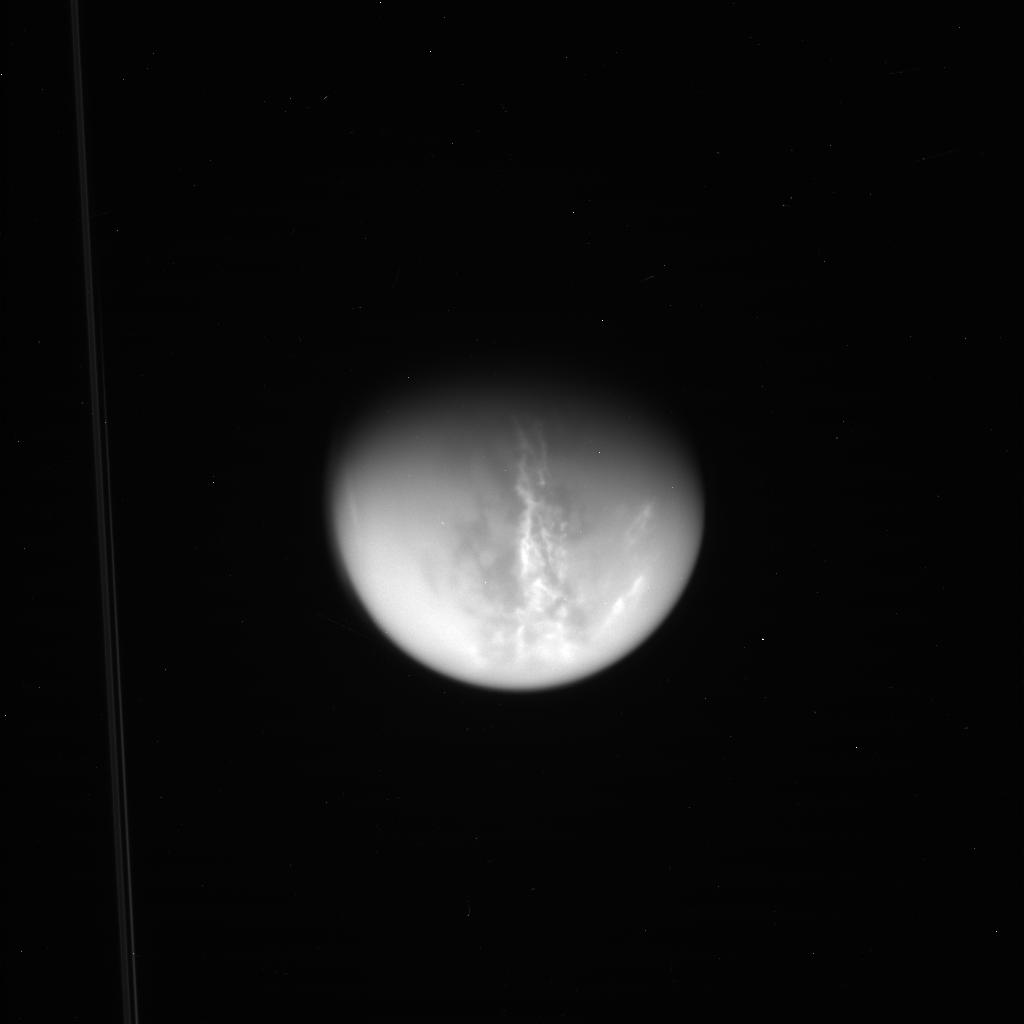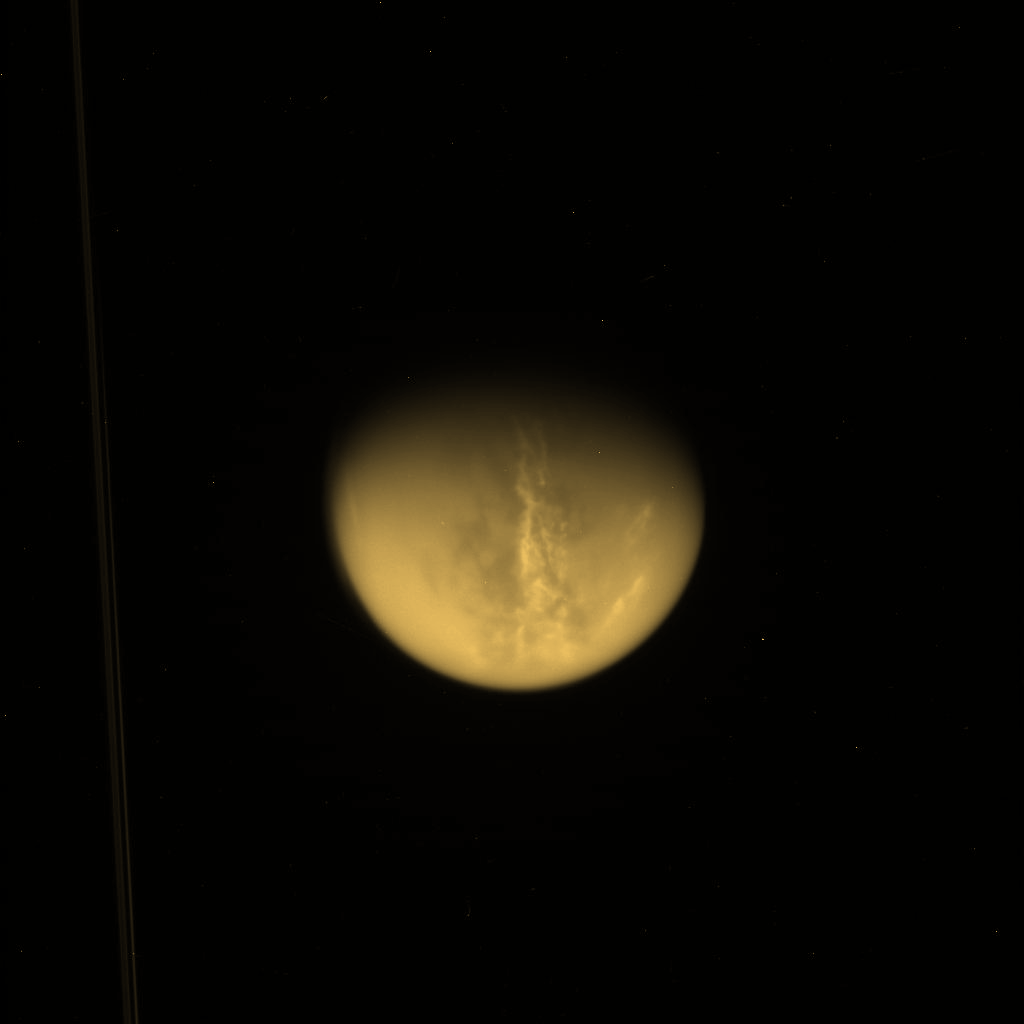Septembre 3, 2021: Some Researchers Develop A Model To Predict The Weather On Mars Or Titan For Any In Situ Mission
A new study entitled "Annular modes of variability in the atmospheres of Mars and Titan", published on August 30, 2021 in Nature Astronomy and proposed by J. Michael Battalio and Juan M. Lora shows that the annular modes are prominent in the atmospheres of the Red Planet Mars and the Opaque Moon Titan to explain their variability. The demonstration of the researchers from the Yale University was made possible thanks to the mobilization of data assimilation datasets for Mars and thanks to the mobilization of a general circulation model for Saturn's largest moon. The scientists demonstrate that annular modes in the atmosphere of Mars and Titan explain in a remarkable way the variability of those atmospheres compared to the configuration of Earth annular modes and the variability of our own atmosphere. One annular mode accounts for the latitudinal shift of the jet on the Red Planet and on our own planet and accounts for the vertical shifts of the jet on the Hazy Moon. Another annular mode accounts for pulses of mid-latitude eddy kinetic energy on Earth, Mars and Titan. The team of researchers shows that the annular mode which accounts for those pulses is efficient to anticipate regional dust activity on the Red Planet.
The annular mode which accounts for pulses of middle latitude eddy kinetic energy is likely to allow us to better understand the Martian weather. The planetologists observe that annular variability can be remarkably similar on different worlds which appear relatively dynamic. Can we apply those annular modes to anticipate the variability of the atmosphere of Venus for instance ? Can we apply those annular modes to the variability of the atmosphere of potential exoplanets ? If planetologists can predict the weather of Venus, Mars or Titan in the coming days, any in situ mission to the surface of those worlds which can mobilize a probe, a drone, a plane, a boat or a submarine will be more likely to be successful. We will be in a position to avoid any potential dust storm event or any potential rainfall event. On Mars, dust storms can appear in a particular area or can become global. We've lost the Opportunity probe due to a global dust storm that prevented the solar panels to fuel the battery. On Titan, the weather can potentially be very bad as well with heavy rainfall events involving methane or ethane. Engineers and scientists are already planning a new mission known as Dragonfly in the low or middle latitudes of Saturn's largest moon in the 2030s.
Planetologists are willing to anticipate the potential weather of Titan when the probe reaches the ground in the low or middle latitudes even if it rarely rains in the area. The Dragonfly mission will involve a rotorcraft that will explore an area composed of dunes. The rotorcraft can potentially encounter dust storms in the land of dunes. Therefore, the study of Titan's meteorology or climate appears crucial. There is a super-rotation phenomenon in the atmosphere of Titan like in the atmosphere of Venus and researchers try to correctly understand the dynamics of jet streams in order to anticipate the weather of Mars or Titan. J. Michael Battalio who is a postdoctoral researcher in Earth and planetary sciences in Yale's Faculty of Arts and Sciences is convinced that we may be only a decade away from the first accurate forecasts regarding the weather of Mars. Being able to anticipate the weather for tomorrow in a particular area on Mars would be perfect. If we have sufficiently refined numerical models as well as quality data regarding atmospheric observations, the forecast can be accurate. J. Michael Battalio pointed out: "But until then, we can rely upon connections between the climate and weather to help anticipate dust storms."
Annular modes on Earth account for the regularity of storm systems in the middle latitudes. The annular mode corresponds to a variability in atmospheric flow without any relationship with the cycle of seasons. Annular modes have an impact on jet streams, rainfall events and cloud formations on the Blue Planet. Those annular modes account for up to one-third of the variability in "eddies" related to winds, including blizzards in New England and heavy storms in the Midwest. J. Michael Battalio has analyzed a large amount of public data regarding the meteorology of Mars with observations of the Martian atmosphere representing 15 years. He has been in a position to determine that there is a regularity of dust storms in the Southern Hemisphere of the Red Planet. That regularity profile is comparable to the regularity profile of Earth's eddies. Thus, he was in a position to conclude that Mars also contains annular modes. A parallel can be drawn between the atmospheric variability of the Earth and the atmospheric variability of Mars. Yet, the atmosphere of the Red Planet is particularly thin and there is not the hydrological cycle of the Earth on that world. Clouds are really scarce in the atmosphere of the Red Planet.
Are there also annular modes on Titan ? Thanks to the Cassini-Huygens mission in the Saturn System, we have gathered a huge amount of data regarding the meteorology or the climate of Titan from 2004 to 2017. Juan Lora who is Battalio's lab supervisor and who is an assistant professor of Earth and planetary sciences at Yale drew the attention of his collaborator on the potential presence of annular modes on Saturn's largest moon. In fact, even if there is a relatively limited amount of data regarding the complex dynamics of the complex chemistry of Titan's atmosphere, Juan Lora has been in a position to develop a well-known or a considered global climate model for the Hazy Moon known as the Titan Atmospheric Model (TAM). The planetologists have demonstrated in their simulations that annular modes are prominent on Mars and Titan and that they have a higher impact in the atmosphere of those worlds than in the atmosphere of the Earth. They may account for up to half of the wind variability on the Red Planet and two-thirds of the wind variability on Saturn's largest moon. The radar data observed from the Cassini orbiter have shown that prevailing winds can engender linear and parallel dunes extending over long distances in the low or middle latitudes of Titan.
Juan Lora pointed out: "Methane clouds and surface changes caused by methane rain on Titan have been observed before." He added: "And now it seems these events are connected to shifts of Titan's strong jet stream, influenced by its annular modes." J. Michael Battalio believes that annular modes can be often or always encountered in the atmosphere of various extraterrestrial worlds like Venus or Gas Giants in the Solar System or beyond because we have found annular modes on three worlds which are relatively different from each other in terms of atmospheric chemistry or atmospheric dynamics. The in-depth study of the Red Planet Mars has shown that there can be regular dust devils or global dust storms that dominate the atmosphere once every few years. Those major storms can last months whereas the smaller storms last less than a day. Regional storms that last days to weeks have also been observed in the thin atmosphere of Mars. The Martian atmosphere is relatively stable in the long run but there are instabilities taking shape from time to time like on Earth or on Titan. The periodicity of the major storms can allow us to anticipate or to predict the weather on Mars or Titan.
The periodic phenomena in the atmosphere of Mars or Titan related to annular modes must be taken into account to find the right time to land on the planet. Methane rain can be a big problem for the electronics of the probe or for the movement of the drone in the air. Dust storms on Mars can be a big problem as well if there are solar panels in the probe. We all have in mind the destiny of the Opportunity rover on Mars. J. Michael Battalio argued: "A global event is what finally ended the Opportunity rover, but the slow accumulation of dust is currently endangering the survival of the InSight mission." Major dust storms can also be encountered on Earth but at a much smaller scale than on Mars. Strong dust storms have been observed in Australia for instance. J. Michael Battalio explained: "During larger regional events, the dust can become so thick at times as to make day seem as dark as the middle of the night. Even without a large, dramatic event, regional storms are a periodic feature." The presence of oceans and seas on Earth as well as the presence of vegetation on that world probably prevent the potential appearance of a global dust storm. That's not the case on Mars.
The annular modes of the Earth, Mars and Titan clearly occur on a regular basis so that one can perform predictions regarding the weather on those worlds. The annular modes influence the eddies that lead to dust storms. Therefore, the continuous analysis of the annular modes allows us to anticipate in a simple way dust storms without having to mobilize a complex model. Can global dust storms take shape on Titan ? That's unlikely because there are lakes and seas in the high latitudes of each hemisphere. The infrared or near-infrared views as well as the radar views acquired from the Cassini spacecraft have clearly shown that the polar regions of Titan appear relatively humid and that the low or middle latitudes of that world appear relatively dry. The relatively dark areas of the low or middle latitudes which mark a sharp contrast with relatively bright areas tend to be dominated by linear and parallel dunes extending over long distances. Those dunes seem to be shaped by prevailing winds. If there are major dust storms on Titan, they must take shape in the low or middle latitudes. Seasonal factors must play a key role for the strength of prevailing winds or for the development of heavy rainfall events in the low or middle latitudes.
- To get further information on that news, go to: https://news.yale.edu/2021/08/30/forecast-mars-otherworldly-weather-predictions and https://www.nature.com/articles/s41550-021-01447-4 .

